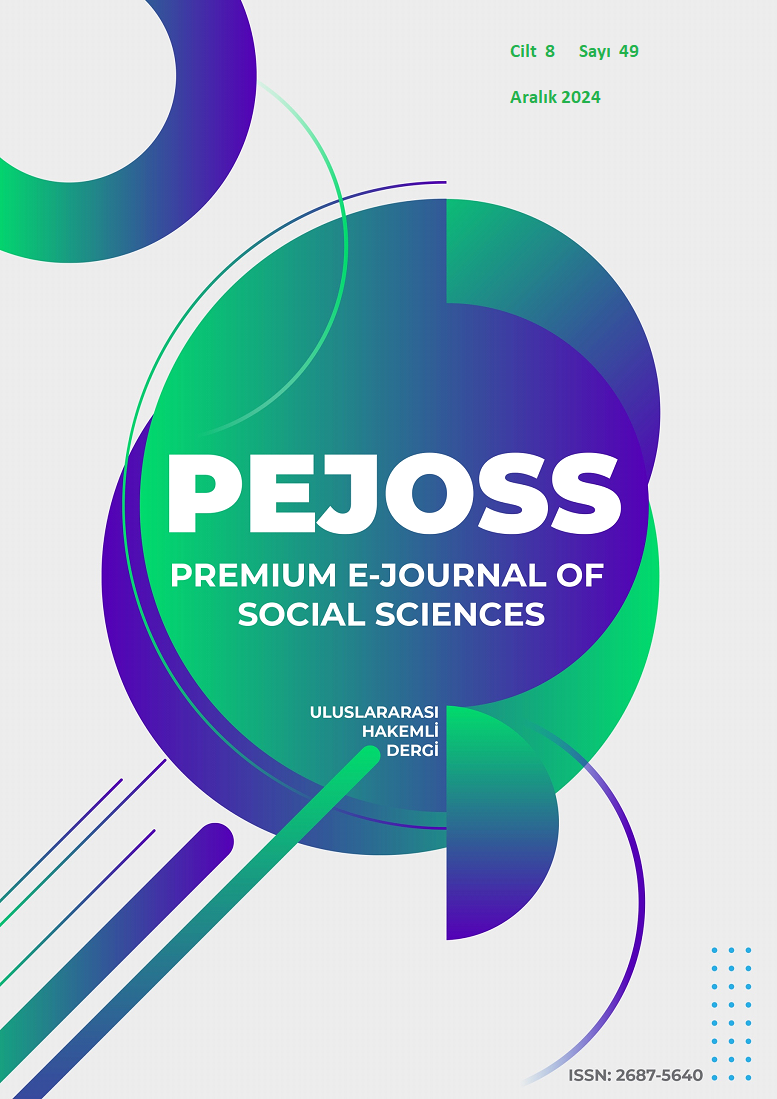Digital Transmission Of History And Culture Within The Scope Of Cultural Heritage Protection: “The Case Of Azerbaijan National Carpet Museum”
DOI:
https://doi.org/10.5281/zenodo.14585796Keywords:
Museum, Azerbaijan National Carpet Museum, Digital MuseumAbstract
The conservation of cultural assets, which are increasingly important in cultural, social and economic dimensions, is among the fundamental elements that shape the identities of societies. While conservation ensures the transfer of historical and cultural heritage to future generations, it also contributes to the construction of local and national identity. The importance of studies on the protection of cultural assets is increasing day by day. In this context, museums are important institutions created to preserve and transmit cultural heritage from generation to generation. While preserving the cultural treasure, they are also effective environments that bring visitors and cultural assets together in a tangible form. The main function of museums is the preservation of collections, but today interactive museums offer visitors a more dynamic experience, enabling a deeper understanding of culture. Enabling visitors to interact with artifacts and enriching them with activities that support learning processes increases the value of cultural heritage and strengthens social awareness. Museums that offer digital approaches can offer a rich interaction environment by using tools such as virtual reality and touch screens with the opportunities offered by technology. In this way, not only the audience, but also the viewers become a part of the cultural content. Such museums also contribute to the preservation of cultural heritage through various educational programs and workshops, and encourage young generations to protect these values.
In this framework, the research was carried out in the Azerbaijan National Carpet Museum with field research method, oral interview technique and literature research. Digital approaches in the museum such as touch systems, animatronic display, show rooms, etc. were examined and contributed to the literature by adding them to the study with their visuals.
Downloads
References
Acar, A. (2017). Müze ve sergilemelerde Etkileşimli Tasarım Çözümleriyle Bilgiyi Görselleştirmek. Hacettepe Üniversitesi Güzel Sanatlar Fakültesi Sanat Yazıları, 36, 139-155.
Akçaova, A., & Köse Doğan, R. (2020). Dijital Çağda Müzecilik Anlayışına Yenilikçi Yaklaşımlar. IDA: International Design and Art Journal, 2(1), 67-79.
Azerbaijan Carpet Museum. www.azcarpetmuseum.az.
Black Ox Audio Visual. www.blackoxav.co.uk .
Boyraz, B. (2011). Müzelerde sergileme yöntemleri bağlamında teknoloji kullanımı (Yüksek Lisans Tezi). Yıldız Teknik Üniversitesi, Sosyal Bilimler Enstitüsü.
Belcher, M. (1991). Types of museum exhibition. Exhibition in Museums, 58-190.
Erbay, M. (2011). Müzelerde sergileme ve sunum tekniklerinin planlanması. İstanbul: Beta Basım.
Gümüş Akın, G., & Gümüş, F. (2019). Türkan Saylan Lepra Anı Evi Projesi. UNIMUSEUM, 2(1), 21-27.
Özrili, A. S., & Özrili, Y. (2021). Müzelerde interaktif (etkileşimli) sergileme uygulamaları. İnönü Üniversitesi Sanat ve Tasarım Dergisi, 11(24), 85-102.
Görüşmeler (Kaynak Kişiler)
Dürdane Gadirova, 43 yaşında, Azerbaycan Milli Halı Müzesi, Halı Şubesi Sorumlusu, Azerbaycan.
Nurana Salimli, 37 yaşında, Azerbaycan Milli Halı Müzesi, Halı Şubesi Sorumlusu, Azerbaycan.
Nardane Yusufova, 50 yaşında, Azerbaycan Milli Tarihi Müzesi Tasviri Metaryeller Şube Müdürü, Azerbaycan.
Sema Kürekçi, 45 yaşında, Kültür ve Turizm Bakanlığı Sanat Tarihçisi, Restoratör ve Konservatör, Bursa.
Sevine Qasuvova, 30 yaşında, Azerbaycan Milli Halı Müzesi, Halı Şubesi Personeli, Azerbaycan.
Yalçın Salimov, 40 yaşında, Azerbaycan Milli Halı Müzesi, Halı Şubesi Sorumlusu, Azerbaycan.
Downloads
Published
How to Cite
Issue
Section
License
Copyright (c) 2024 Premium e-Journal of Social Science (PEJOSS)

This work is licensed under a Creative Commons Attribution 4.0 International License.


